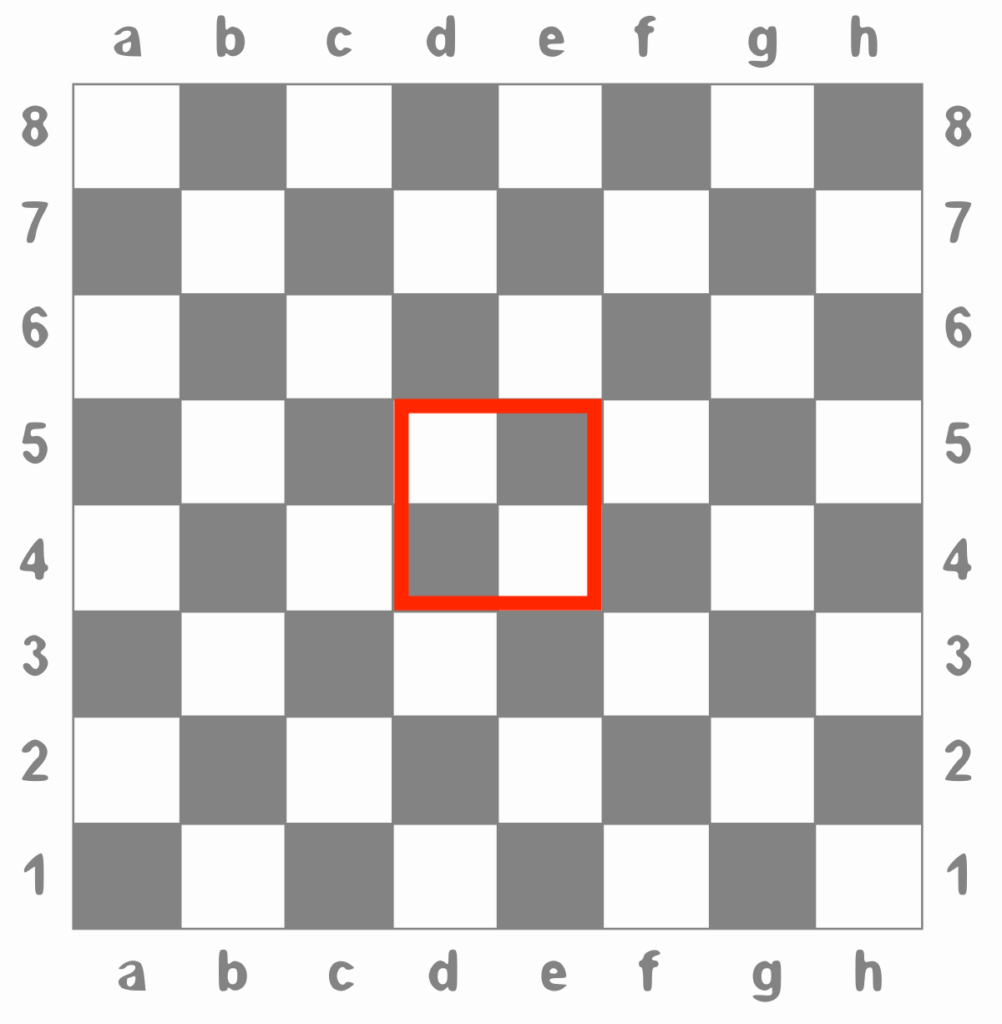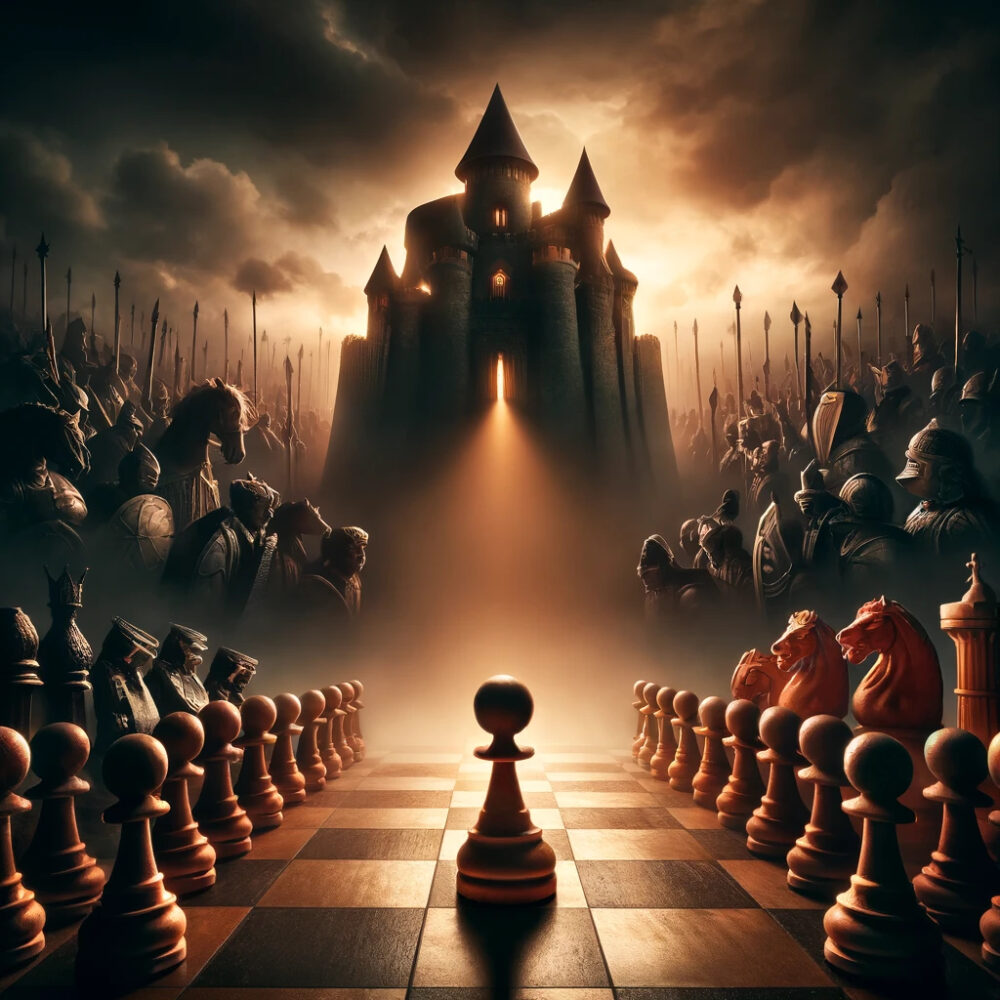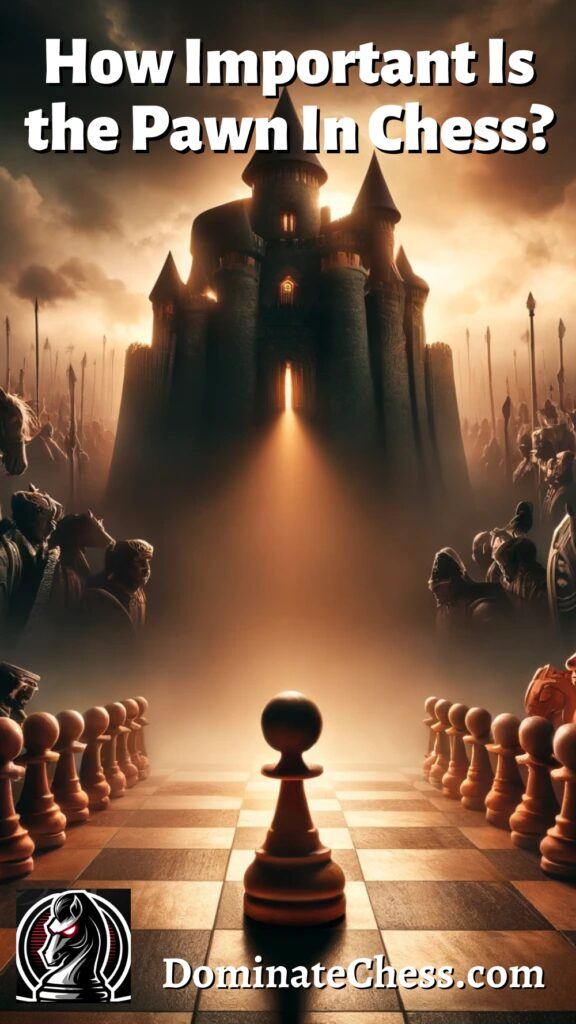You may think a pawn is insignificant. But just how important is the pawn in chess?
They’re so important, nine times out of ten they actually determine the outcome of the entire game.
How Important is the Pawn in Chess?
Pawns are crucial in chess. They shape strategy, help control the center, and provide tactical opportunities through sacrifices. Using them properly often determines winning or losing.
So often underestimated, players forget that you have more pawns on the chessboard than any other piece. By a long shot.
Let’s take a look at the importance of pawns in chess by examining their strategic value, their role in controlling the center, the significance of pawn structures, the power of pawn promotion, and the art of pawn sacrifice.
Pawns: The Secret Backbone of Chess Strategy
At first glance, pawns are unassuming. They can only move one square at a time. Just one square. But that one square move can actually be a game changer. Oh hello, en passant…
And even though they hold the lowest material value (1 point), they serve as the backbone of a player’s strategy.
Where they find their strength is in their support of other pieces, their ability to be pesky and restrict the opponent’s mobility, and their ability to spark tactical opportunities.
They can be a strong line of defense as well, shielding the more valuable pieces and the king. Using your pawns correctly can establish control over key squares and create weaknesses in your opponent’s camp.
Manage your pawns properly and you’ll create advantages that are hard for your opponent to overcome. Let’s face it. Understanding pawn play is critical no matter your skill level.
Related Article at DominateChess.com!
Check out “99 Common Chess Terminologies and Their Meanings You Should Know” to brush up on all the chess terms you’ll need to up your game!
Controlling the Center: How Pawns Shape the Battlefield

One of the most fundamental principles in chess is controlling the center.
A well placed pawn in the center easily controls key squares and restricts your opponent’s mobility.
When your pawns can occupy or influence key central squares like d4, d5, e4, and e5, they create a dominant and powerful presence in the middle of the board.
The opening moves of a chess game more often than not involve a player moving their pawn towards the center of the board.
Classical openings like the Ruy Lopez, the Italian Game, and the Queen’s Gambit all involve pawn moves that help establish central control.
Controlling the center allows for more flexibility and options for both offense and defense and it’s all brought about by the pawns.
Pawn Structures: Key to Understanding Positional Play
Pawn structures refer to the arrangement of pawns on the board.
Being able to recognize common pawn structures can help you create a plan to exploit weaknesses in your opponent’s position.
Some key pawn structures include:
- Isolated Pawn: A pawn with no neighboring pawns on adjacent files.
- Doubled Pawns: When two pawns of the same color occupy the same file, they are considered doubled.
- Passed Pawn: A pawn with no opposing pawns on its way to promotion is called a passed pawn. These can become powerful assets as they pose a threat of promotion.
- Backward Pawn: A pawn that cannot advance without being captured and has no pawn support from behind is called a backward pawn. This pawn can create weaknesses in its position.
Understanding these structures is crucial to mastering positional advantage and making use of the potential of pawns.
Pawn Promotion: Transforming a Humble Soldier into a Powerful Ally
The biggest turnaround in any chess game is when your pawn reaches your opponent’s back rank and promotes. Normally you’ll promote your pawn to a queen because of the queen being so powerful. But technically it can transform into a queen, rook, knight, or bishop.
This dramatically changes the balance of the game.
As stated before, this is why passed pawns are so dangerous and can provide a major advantage in the endgame. Pawn promotion changes everything. It almost always leads instantly to unexpected tactical opportunities.
Because of this, pawns that are threatening to promote become a serious threat, forcing the opponent to maneuver to prevent its promotion. In some cases, a pawn promotion can lead to checkmate, making it truly a game changing event.
Knowing when and how to promote a pawn effectively is a skill you definitely want to learn if you want to improve your game. Promote your pawn at the right time and transform it to the right piece and you can instantly find yourself victorious.
The Art of Pawn Sacrifice: Tactical Opportunities and Risks
Pawn sacrifices, also known as gambits, are an important part of chess strategy as well. When you offer up your pawn in exchange for some other advantage, maybe piece development, control of a key square, or to open a line of attack, you create tactical opportunities for yourself.
Some well known pawn sacrifices include the King’s Gambit, Benko Gambit, and the Evans Gambit. However, pawn sacrifices are not without risk.
Remember, you’re giving up material, giving your opponent material advantage. And what happens if the intended compensation you were looking for fails to materialize? Now you’re potentially in a hole. Always consider the pros and cons of a pawn sacrifice and if your gambit is worth it.
Done correctly, you can create weaknesses in your opponent’s position by forcing doubled pawns, isolated pawns, or pawn islands. These weaknesses can bring about positional advantage which can ultimately lead to victory.
Final Thoughts
Never underestimate the pawns importance. In the hands of a skilled player, pawns become weapons that lead to victory and highlight the strategy and beauty of chess.
What do you think? Are you a master at maneuvering your pawns? Or do you sacrifice them quickly to make way for the more important pieces on the board? Let me know what you think in the comments section below! I always look forward to hearing from you and I always respond!



Wow! I did not know that controlling the middle of the board was so important. I didn’t even know it was a thing. I learned a few strategies when I was in middle school. But that is about it. Question. How long does it take for someone to be considered a pro in chess?
Controlling the center is huge. If you’re getting back into playing, that should be your number one focus. Being considered a pro all depends on how good your game is. Some are naturals and even savants. And for the rest of us, it’s practice, practice, practice!
This is such an interesting point! I never realized how crucial the pawn is to a successful game of chess. I’ve always been focused on the knight and queen!
I also didn’t know just how important it was to control the center of the board either.
Do you have any tips for how to strategically use pawns in the opening game?
Lisa Marie
You always want to control the center and pawns are crucial for that. Focus on that when you’re starting a game and you’d be surprised at how much you improve 🙂
Awesome! Thanks for the tips!!
Great article on the importance of pawns in chess! I particularly liked how you explained the different roles that pawns can play in the game, from protecting the king to controlling the center of the board. Your examples and diagrams really helped to illustrate the concepts. I’ve been playing chess for a while now, and I found your article to be very informative and helpful. Do you have any tips on how to improve pawn play in the middle game? Thanks for sharing your expertise!
Once you get into the middle game you want to be developing your other pieces as best you can, but always do your best to maintain good pawn structure and you’ll be alright. Thanks for the comment!